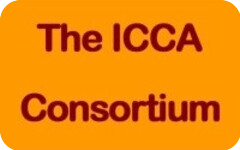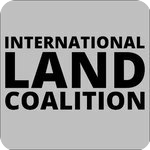F.A.Q
Why Sinjajevina is in danger?
Sinjajevina is in danger due to potential military activities, specifically training exercises and weapon testing, despite promises from the Montenegrin government to demilitarize the area. This ongoing threat endangers the local community's traditional pastoral way of life, their livelihoods, and the mountain's unique biodiversity and environmental significance.
How can I join and help?
Support our protests, petitions and work. You can find out about our activities on social networks and the media. We invite you to be our voice in every place, but also the voice of this society of reason, which will say that Sinjajevina must not be a military training ground, but exclusively an agricultural and tourist asset. Sign the international campaign and donate here https://worldbeyondwar.org/sinjajevina/
Where is Sinjajevina located?
Sinjajevina is located in the central mountainous and highest part of Montenegro. In a broader sense, it represents part of the high mountain massif of Durmitor and Sinjajevina, which stretches in the Dinaric direction for a length of 85 km. Sinjajevina is about 40 km long and 15 km wide at its widest point. With these dimensions, Sinjajevina is also the largest Montenegrin mountain range, covering an area of about 450 km2. In addition, Sinjajevina is the largest karst plateau in Montenegro with an average altitude of about 1600 m above sea level, and together with Durmitor, it represents the largest morphological unit in northwestern Montenegro.
How many people live in or towards Sinjajevina?
In the settlements located in Sinjajevina, the population has decreased from 8,521 in 1961 to 4,678 in 2011 over the last 50 years. Unofficial estimates suggest that up to 250 families live in Sinjajevina during the summer months.
Which plant species are living in Sinjajevina?
There are around 1,300 species and subspecies of vascular plants, of which 56 species of vascular flora do not cross the borders of the Balkan Peninsula, 40 species have national protection status, 18 are listed in the CITES convention, while two taxa are listed in the Habitat Directive and one in the Bern Convention.
How many animal species are living in Sinjajevina?
There are 43 species of bats, 15 of which are protected by law in Montenegro (strictly protected species), 24 species are listed in the appendices to the Bern Convention, 16 species in the appendices to the Habitats Directive, 3 species in the appendices to the CITES Convention, and 14 species of bats are listed in Eurobats.
How many bird species are there in Sinjajevina?
Of the total number of confirmed and expected bird species (161 species), 141 species are protected by national while 77 species have a specific international protection status - they are listed in the annexes to the EU Birds Directive (BD).
Which is the cultural heritage of Sinjajevina?
The question concerns 18 cultural assets and monuments with cultural heritage status located within the proposed boundaries of the research area of the Agency for the Protection of Nature and the Environment.
How much of the area of Sinjajevina is covered by pastures?
The pasture area covers 120,000 ha, which can support up to 200,000 sheep and 10,000 cattle.
What does the civil initiative Save Sinjajevina do?
The civil initiative Save Sinjajevina brings together local communities from Sinjajevina and other citizens of Montenegro who are committed to protecting the ecological potential of our country.
Which are the goals of the Civic Initiative Save Sinjajevina?
What is urgent and minimally required by local communities and other citizens of Montenegro (a demand that is widely supported both domestically and abroad, and that support is growing steadily every day) is to officially revoke the decision of the Government of Montenegro to establish a military training ground in Sinjajevina, made in September 2019. In contrast to this, the vast majority want Sinjajevina to become a protected area in whose creation and management the residents of local communities - the people of Stočar, Katunjan and the residents of the village below Sinjajevina - will be actively involved.







